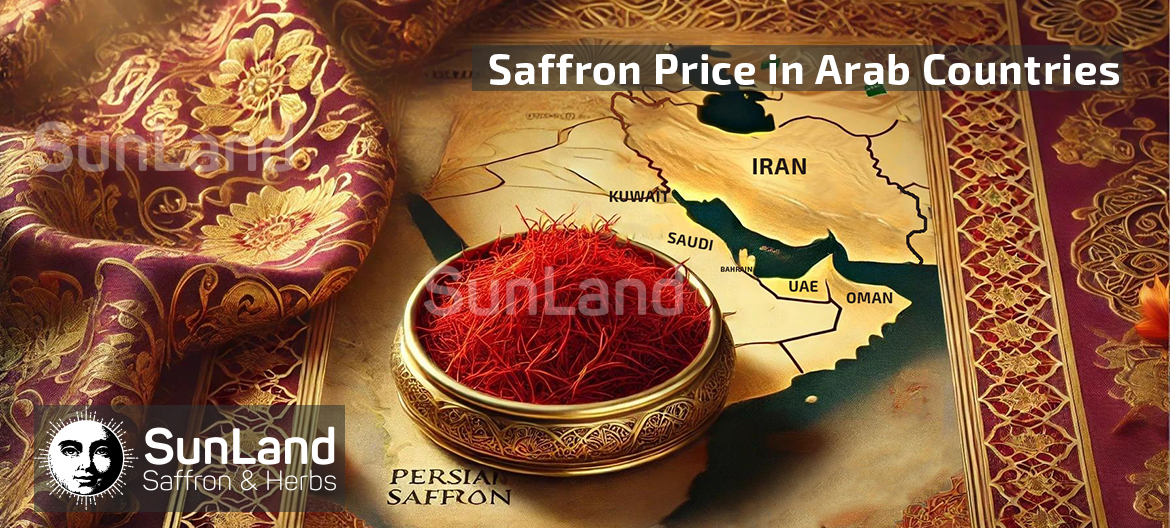26/07/2023
Use of ISO 3632 to Measure Saffron Quality
There are some common ways to measure the quality of saffron, but they are not practical for international trade. ISO 3632 clearly specifies the requirements and criteria for the saffron quality, applicable for both whole filament and powder form. This time, we intend to provide a brief description of the ISO 3632 saffron quality requirements for international saffron trade and export.
What is ISO 3632 and Why is it Important for Saffron?
ISO 3632 is an international standard that establishes specific methods for assessing saffron quality, particularly its color strength and chemical properties. While it doesn’t directly address aroma and flavor, ISO 3632 remains the most recognized benchmark for saffron quality worldwide.
For a comprehensive understanding of traditional saffron quality tests, you can also check out our article, “Seven Easy Ways to Identify Real Saffron”.
How is saffron quality measured?
The ISO 3632 standard outlines a series of requirements for saffron in both filament and powder forms. The following sections summarize the key components of the ISO 3632 framework:
-
Scope
The standard defines saffron quality requirements for:
- Whole filaments: Supple, elastic, and hygroscopic (moisture-absorbing).
- Powder form: Ground saffron with the same quality criteria.
-
Normative References
ISO 3632 incorporates several related standards for testing saffron:
- ISO 928:1980, Spice and condiments -determination of total ash
- ISO 930:1980, spice and condiments- determination of acid-insoluble ash
- ISO 941:1980, spice and condiments- determination of cold-water-soluble extract
- ISO 948:1980, spice and condiments-sampling
- ISO 3632-2:1993, Saffron, Test methods
This section clarifies terms like:
- Stigma: The red part of the saffron filament.
- Style: The yellow connecting part.
- Floral waste: Non-saffron plant material.
- Extraneous matter: Impurities such as dust or foreign substances.
-
Specification
Filaments are categorized based on their content of floral waste and extraneous matter. Additional specifications include:
- Absence of mold or insects.
- Compliance with specific chemical requirements.
-
Sampling
ISO 3632 references ISO 948 for the proper sampling of saffron batches to ensure accurate testing.
-
Preparation of Test Samples
Saffron samples (minimum 10 grams) must be prepared quickly to prevent changes in their properties. All tests must comply with ISO 3632-2.
-
Test Methods
Chemical and physical tests include analyzing:
- Color strength (Crocin levels).
- Bitterness (Picrocrocin levels).
- Aroma (Safranal levels).
The results determine the saffron’s grade.
-
Packing and Marking
Saffron must be packed in clean, airtight, and moisture-resistant containers. Specific marking methods differ for filament and powder forms.
This is the main frame of reference for saffron quality, however, there are some arguments regarding the effectiveness of the spectrophotometric method to assess the overall quality of saffron.
According to this standard, Iran produces Grade A and Grade B of saffron. To review the full text of ISO 3632 saffron quality, please click here.
What are ISO scientific tests or methods for measuring saffron quality?
There are several test methods and standards to inspect the different characteristics of herbs and spices, including:
- ISO 3632-2:2010: for saffron (Crocus Sativus) quality and specification
- ASTA 2.0– Moisture (distillation method)
- ASTA 3.0 -Total Ash (on a dry basis)
- ASTA 4.0 – Acid insoluble ash
- ASTA 5.2 –Steam volatile oil in spices
- ASSTA 60 – Water activity
- ASTA 7.0 –Crude fiber (on a dry basis)
- ASTA 14.1 – Extraneous matter in spices (excluding pepper)
- Total nitrogen % (on a dry basis)
- Solubility in cold water (on a dry basis)
- ISIRI 259-1 & ISIRI 259-2
- …
Saffron adulteration normally occurs by fraudulent actors in saffron market and there are different laboratory techniques to detect them. Among those saffron laboratory techniques there are Spectrophotometric analysis, electronic nose system, gas chromatography-mass spectrometry (GC-MS), and microscopic study of samples.
SunLand performs the general laboratory tests to make sure about the purity and quality of the products, according to ISO 3632 and supplement test methods and standards. Our laboratory tests results in various information including:
- Saffron physical analysis
- Saffron chemical analysis
- Saffron microbiological analysis
- Saffron heavy metal tests
- Additional tests (upon customer requests)
- Etc.
How Effective is ISO 3632 in Measuring Saffron Quality?
While ISO 3632 remains the gold standard for saffron quality, there is some debate about the reliability of the spectrophotometric method used to measure saffron properties. Critics argue that it may not fully capture the overall quality, particularly aroma and flavor profiles.
Which is the No 1 quality saffron in the world?
Currently, Iran produces the best saffron in the world, for many reasons, including access to suitable climate, soil, farmer knowledge, etc. Spain, Greece, India, Pakistan, and Morocco come after Iran as the major saffron producing countries.
SunLand Laboratory tests:
ISO 3632 plays a critical role in ensuring consistency and quality in the international saffron trade. By providing a standardized method to evaluate saffron’s color strength and chemical properties, it helps buyers and sellers confidently trade this valuable spice. SunLand, normally conducts all regular tests to ensure customers and traders about the quality of the saffron products.










